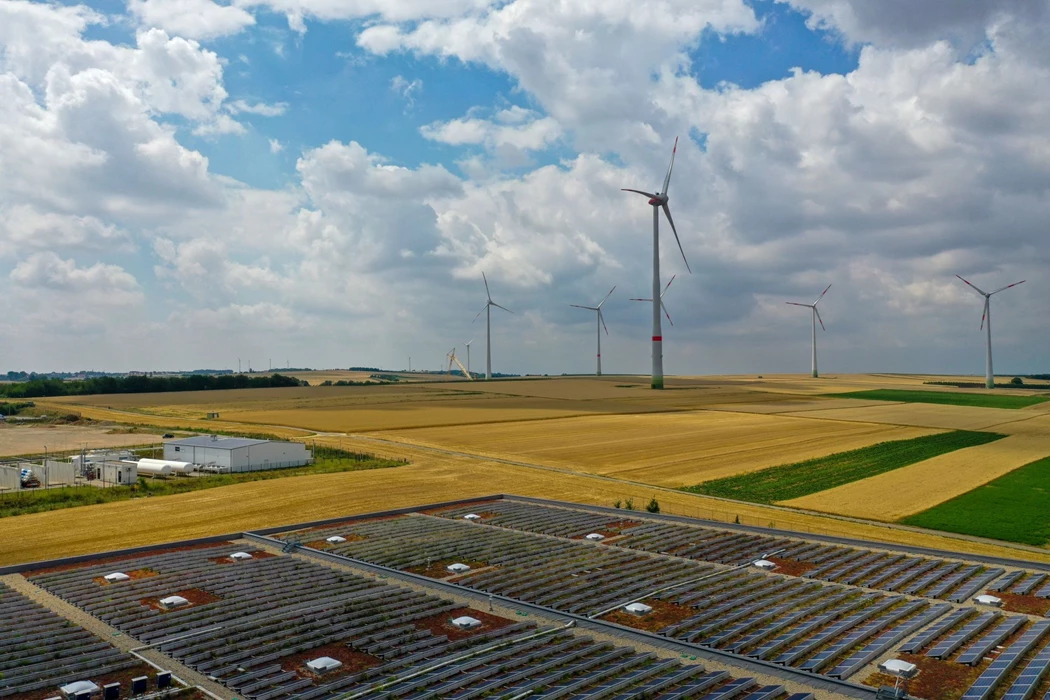EU Wants to Attract Clean Tech: Here’s What You Need to Know
(Bloomberg) -- The European Union unveiled its plans to join the global race to produce clean technologies as the bloc strives to reach its ambitious climate goals.
The landmark Net-Zero Industry Act is focused on nurturing green manufacturing, while an accompanying measure seeks to secure ample supplies of critical raw materials that are a vital part of the energy transition. They proposals are also a response to growing competition from the US and China.
However, they’ve raised concerns about fueling protectionism, and some analysts say they could even undermine the fight against climate change. We take you through the plans and how they might work.
The Key Technologies
The Net-Zero Industry Act calls for the bloc to produce at least 40% of its clean-tech needs within its own borders by the end of the decade. It focuses on eight key sectors that officials see as crucial to meet the goal of climate neutrality by 2050:
The EU — and Germany, in particular — once enjoyed global dominance when it came to producing solar panels, but it has lost out to China over the last decade. Currently, the bloc makes only around 10% of the solar panels it installs, but it wants to massively scale-up the technology this decade as tensions with China increase.
Europe is also seeking to target more nascent industries. Heat pumps boomed last year during the energy crisis exacerbated by Russia’s invasion of Ukraine. And electrolyzers will be crucial to producing the green hydrogen needed to decarbonize the most energy-hungry industries, like steel.
The plan includes a target to inject 50 million tons of carbon dioxide into geological storage sites annually by 2030. Carbon capture and storage is seen as key to meeting the 2050 net-zero goal.
Nuclear Question
Missing from the EU’s list of key sectors is nuclear power. In the past year, nuclear has returned to the spotlight as an emission-free source of stable energy, albeit one that produces radioactive waste from an aging reactor fleet.
To allay the concerns of France and other countries that rely on atomic power, the commission named advanced nuclear technologies as net-zero, in line with the bloc’s existing green standards. This includes so-called generation IV reactor technology, currently in the pre-commercial stage, and small-modular units. The EU said these will also be supported by measures proposed Thursday, though to a different degree.
Critical Raw Materials
The EU wants to ensure that at least 40% of the critical raw materials it needs should be processed within the region. These substances — often metals — are vital to the production products from batteries to solar panels. The bloc has also proposed classifying copper and nickel as such materials.
For wind turbines, the EU estimates that demand for rare earth metals will increase up to six-fold this decade. The need for lithium — important for electric vehicles and energy storage — could jump 12 times over the same time period.
Some member states are already taking their own measures to secure supplies. Germany is offering loan guarantees to commodity traders to buy metals, as well as gas.
China is now the dominant global supplier for two-thirds of the critical raw materials identified by the EU in 2020, and in the case of magnesium, it’s responsible for nearly 90% of global production.
European production has also been complicated by volatile energy costs in the region. And while the region’s largest known deposit of rare earth minerals was discovered in Sweden’s Arctic this year, it will take 10-15 years before mining can begin.
Targeting Rivals
The International Energy Agency estimates that the global market for key large-scale clean technologies will be worth €600 billion annually by the end of the decade — and Europe wants to secure its share.
The US’s Inflation Reduction Act — a package of subsidies and measures to cut red tape — was the primary motivator for the EU’s race to catch up. However, the bloc is also focused on China, given its dominance in many of the sectors Europe wants to re-shore.
Bids to secure public contracts from countries with more than a 65% market share in the EU — where the bloc deems supply “insufficiently diversified” — will be downgraded, according to the plans.
Banking on Hydrogen
One of the EU’s most ambitious targets is to rapidly scale-up nascent production of so-called green hydrogen to 10 million tons this year in order to decarbonize heavy industry. The commission plans to help by establishing a $3 billion hydrogen bank that to provide suppliers with guaranteed demand.
The first pilot auctions to produce renewable hydrogen will begin in autumn. The winner will receive a fixed premium for each kilogram of the fuel they produce for a period of 10 years. The first auction will have a budget of €800 million.
The Reaction
Industry groups so far have given the EU’s plans a mixed reaction. Eurometaux, which represents non-ferrous metals producers, called the minerals component a “paradigm shift for Europe’s raw materials policy if implemented quickly.”
Business Europe, a broader lobby organization, took issue with the Net Zero Industry Act’s “limited scope,” saying it could be a “handicap” for the region’s net-zero transformation.
“The EU must acknowledge that the decarbonization of Europe is a matter of priority for the whole economy, industries and businesses,” said the group’s director general, Markus Beyrer. He welcomed efforts to speed the expansion of clean-energy manufacturing.
--With assistance from and .
(Updates with comment from industry group in final section.)
More stories like this are available on bloomberg.com
©2023 Bloomberg L.P.





